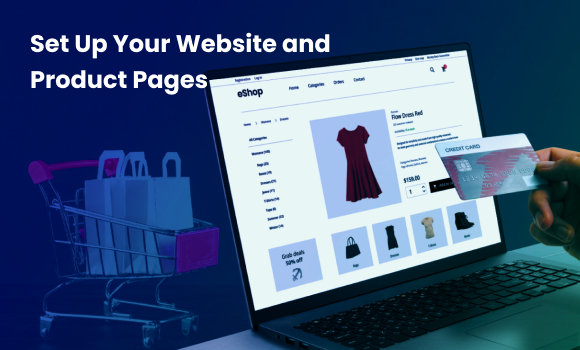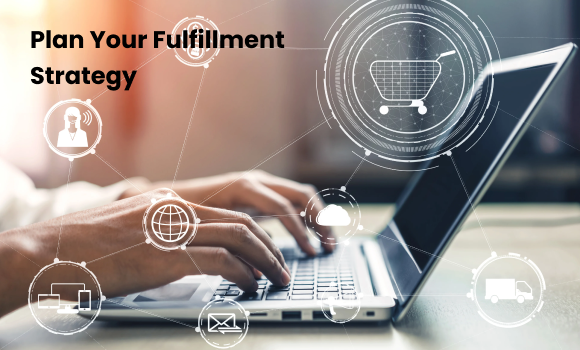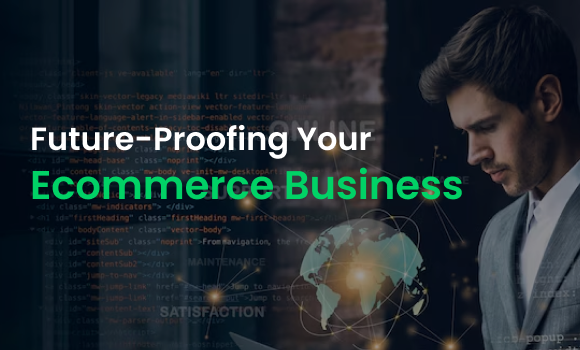How to Start an Ecommerce Business in 2025: Complete Step-by-Step Guide
Table of Contents
- 1 How to Start an Ecommerce Business in 2025: Complete Step-by-Step Guide
- 2 Understanding the Ecommerce Landscape in 2025
- 3 Understanding Startup Costs
- 4 Cost Optimization Strategies
- 5 Common Challenges and Solutions
- 6 Future-Proofing Your Ecommerce Business
- 7 30-Day Launch Timeline
- 8 Success Metrics Tracking
Starting an ecommerce business has never been more accessible, yet the competition is fiercer than ever. With billions of online shoppers expected by 2025 and D2C brands showing exponential growth, the opportunities are immense for entrepreneurs ready to enter the digital marketplace.
Whether you’re wondering how much it costs to start an ecommerce business or seeking the best way to start ecommerce from home, this comprehensive guide will walk you through every essential step to launch your online store successfully.
In today’s digital landscape, establishing a strong online presence is crucial for any aspiring entrepreneur. Beyond just setting up an ecommerce store, building a robust digital marketing strategy will be paramount to stand out amidst the competition. From optimizing SEO and leveraging social media to implementing effective email marketing campaigns, these strategies can significantly enhance your brand visibility and customer engagement. By focusing on these key aspects alongside your ecommerce setup, you can maximize your chances of success in the dynamic world of online retail.

Understanding the Ecommerce Landscape in 2025
The ecommerce industry continues its exponential growth, driven by changing consumer behaviors and technological innovations. The top e-commerce trends for 2025 include AI-driven personalization, social shopping, sustainability, and voice commerce, reshaping how businesses connect with customers.
For aspiring entrepreneurs, this presents both opportunities and challenges. The barrier to entry remains relatively low, making it an attractive option for those looking to start their entrepreneurial journey with minimal upfront investment.
- Step 1: Choose Your Product and Niche
- Google Trends analysis for search volume patterns
- Social media listening for customer pain points
- Competitor analysis to identify market gaps
- Amazon Best Sellers research for trending products
- Step 2: Validate Your Business Idea
- Pre-Launch Surveys: Create landing pages with product descriptions and gauge interest through email signups or survey responses.
- Social Media Testing: Share product concepts on relevant social media groups and monitor engagement levels.
- Minimum Viable Product (MVP): Launch with a small product selection to test market response before expanding your inventory.
- Step 3: Register Your Domain and Choose Hosting
- Step 4: Choose Your Ecommerce Platform
- Step 5: Set Up Your Website and Product Pages
- Step 6: Configure Payment Gateways
- Step 7: Plan Your Fulfillment Strategy
- Research shipping costs for different zones
- Offer multiple delivery options (standard, express, same-day)
- Implement free shipping thresholds to increase average order values
- Provide order tracking and delivery notifications
- Establish clear return and exchange policies
- Step 8: Legal and Business Considerations
- Step 9: Launch and Market Your Store
- Test all website functionality thoroughly
- Prepare inventory and fulfillment processes
- Create social media profiles and content
- Develop email marketing sequences
- Plan launch promotions and offers
- AI-powered chatbots for customer service
- Personalized product recommendations
- Voice search optimization
- Sustainable packaging and practices
- Mobile-first design principles
-

KINGSTON AJITH
Senior Content Writer @ HostingRajaA seasoned Senior Content Writer with over 5 years of experience in the tech industry, specializing in web hosting. Passionate about creating unique, high-quality content for articles, blogs, and web pages. As a dedicated learner, continually improving writing skills and overseeing all online content and communications to ensure quality and consistency.

The foundation of any successful ecommerce business lies in selecting the right product and niche. This decision will influence everything from your target audience to your marketing strategy and profit margins
Research Market Demand
Before committing to a product, validate market demand through:
Modern ecommerce offers various approaches to suit different budgets and risk tolerances:
Dropshipping: Start without inventory by partnering with suppliers who ship directly to customers. This model requires minimal upfront investment but offers lower profit margins.
Print-on-Demand: Create custom designs for products like t-shirts, mugs, or phone cases. Products are manufactured only after orders are placed, eliminating inventory risks.
Private Label: Source generic products and brand them as your own. This approach offers higher profit margins and brand control but requires more initial investment.
Digital Products: Sell ebooks, courses, software, or digital services. These products have no shipping costs and can be delivered instantly, offering excellent scalability.

Market validation prevents costly mistakes and ensures genuine demand for your products. Use these methods to test your concept:
Your domain name serves as your digital identity and significantly impacts your brand recognition and search engine optimization.
| Criteria | Best Practice | Why Important |
|---|---|---|
| Length | Keep it short and memorable | Easy to type and remember |
| Keywords | Include relevant terms if possible | SEO benefits |
| Extension | Choose .com for maximum credibility | Universal recognition |
| Branding | Make it brandable and unique | Long-term marketing value |
Selecting the Right Hosting Solution
Your hosting choice directly impacts website performance, security, and scalability. For ecommerce websites, consider these factors:
| Hosting Type | Performance | Security | Scalability | Best For |
|---|---|---|---|---|
| Shared Hosting | Basic | Standard | Limited | Beginners, low traffic |
| VPS Hosting | High | Enhanced | Excellent | Growing businesses |
| Ecommerce Hosting | Optimized | Advanced | Automatic | Online stores |
| Feature | Why Critical | HostingRaja Advantage |
|---|---|---|
| SSL Certificates | Secure customer transactions | Included in all plans |
| Daily Backups | Protect against data loss | Automated backup system |
| 99.9% Uptime | Ensure store availability | Guaranteed uptime SLA |
| CDN Integration | Faster global loading speeds | Built-in CDN network |
| 24/7 Support | Immediate technical assistance | Expert ecommerce support |
Selecting the right ecommerce platform determines your website’s functionality, customization options, and long-term scalability.
| Feature | WooCommerce | Shopify | Wix Commerce |
|---|---|---|---|
| Setup Difficulty | Medium | Easy | Easy |
| Monthly Cost | Pay only for hosting | Monthly subscription required | Monthly subscription required |
| Transaction Fees | None | Platform fees apply | Platform fees apply |
| Customization | High | Medium | Medium |
| Indian Payment Gateways | Full Support | Limited | Limited |
| SEO Control | Complete | Good | Basic |
| Plugin/App Ecosystem | Extensive | Large | Moderate |
| Platform | Pros | Cons | Ideal User |
|---|---|---|---|
| WooCommerce | Complete control, no transaction fees, extensive customization | Requires technical knowledge, self-maintenance | Tech-savvy entrepreneurs, long-term growth |
| Shopify | User-friendly, comprehensive features, reliable hosting | Monthly fees, transaction costs, limited customization | Beginners, quick setup priority |
| Wix Commerce | Drag-and-drop interface, all-in-one solution | Limited scalability, basic SEO features | Small businesses, simple stores |
For Indian businesses, WooCommerce often provides better value and local payment gateway support, while Shopify offers superior ease of use for non-technical users.

Your website design and product presentation directly impact conversion rates and customer trust.
Homepage: Create a compelling first impression with clear value propositions, featured products, and trust signals like customer testimonials and security badges.
Product Pages: Include high-quality images, detailed descriptions, customer reviews, and clear pricing information. Optimize for mobile devices since mobile commerce continues growing rapidly.
Navigation: Implement intuitive menu structures and search functionality to help customers find products easily.
Trust Signals: Display security certificates, customer testimonials, return policies, and contact information prominently.
Mobile Optimization: Ensure your website performs excellently on mobile devices, as mobile commerce represents an increasingly significant portion of online sales.
Search Engine Optimization helps potential customers find your business when searching for related products or services. Focus on local SEO if you serve a specific geographic area, and optimize your website for relevant keywords your customers use.
Email Marketing remains one of the highest-ROI marketing channels for small businesses. Build an email list from the beginning and nurture subscribers with valuable content and promotional offers.
Networking and Partnerships can accelerate growth through referrals and collaborative opportunities. Join online communities, attend virtual events, and build relationships with complementary businesses.
Payment processing forms the backbone of ecommerce operations. Choose gateways that balance security, user experience, and cost-effectiveness.
| Gateway | Strengths | Payment Methods | Best For |
|---|---|---|---|
| Razorpay | Comprehensive features, competitive rates | Cards, UPI, wallets, net banking | All business sizes |
| PayU | Established reputation, fraud protection | Multiple payment options | Medium-large businesses |
| Instamojo | User-friendly, quick setup | Basic payment methods | Small businesses, startups |
| CCAvenue | Extensive bank partnerships | Wide payment method support | Established businesses |
| Security Measure | Implementation | Benefit |
|---|---|---|
| PCI DSS Compliance | Choose compliant payment processors | Legal compliance, customer trust |
| SSL Certificates | Enable HTTPS for entire website | Secure data transmission |
| Tokenization | Use secure payment tokens | Protected customer data |
| Two-Factor Authentication | Enable admin 2FA | Enhanced account security |

Efficient order fulfillment directly impacts customer satisfaction and repeat business rates.
Fulfillment Options:
Self-Fulfillment: Handle storage, packaging, and shipping in-house. Provides complete control but requires significant time and space investments.
Third-Party Logistics (3PL): Partner with fulfillment centers that handle storage and shipping. Companies like Shiprocket, Delhivery, and Blue Dart offer comprehensive ecommerce logistics solutions.
Hybrid Approach: Combine self-fulfillment for local orders with 3PL services for distant locations or peak seasons.
Shipping Strategy Development:
Proper business registration and compliance protect your venture and build customer trust.
| Business Type | Complexity | Liability | Tax Implications | Best For |
|---|---|---|---|---|
| Proprietorship | Low | Unlimited | Simple | Solo entrepreneurs |
| Partnership | Medium | Shared | Moderate | Multiple founders |
| LLP | Medium | Limited | Moderate | Professional services |
| Private Limited | High | Limited | Complex | Growth-oriented businesses |
| Requirement | When Needed | Consequences of Non-Compliance |
|---|---|---|
| GST Registration | Annual turnover > threshold | Legal penalties, business restrictions |
| Business License | All businesses | Operating restrictions, fines |
| Privacy Policy | Data collection | Legal liability, customer trust issues |
| Terms of Service | All ecommerce sites | Dispute resolution problems |
A successful launch requires strategic planning and multi-channel marketing approaches.
Pre-Launch Preparation:
| Channel | Cost | Timeline | ROI Potential | Best For |
|---|---|---|---|---|
| SEO | Low-Medium | Long-term | High | Sustainable growth |
| Paid Advertising | Medium-High | Immediate | Variable | Quick results, testing |
| Social Media | Low-Medium | Medium-term | Medium-High | Brand building, engagement |
| Email Marketing | Low | Medium-term | Very High | Customer retention |
| Content Marketing | Medium | Long-term | High | Authority building |
| Phase | Key Activities | Timeline | Success Indicators |
|---|---|---|---|
| Pre-Launch | Website testing, inventory setup, marketing preparation | 2–4 weeks | All systems functional |
| Soft Launch | Limited audience, feedback collection | 1–2 weeks | Positive user feedback |
| Full Launch | Public announcement, marketing campaigns | Ongoing | Traffic and sales growth |
| Post-Launch | Optimization, customer support, scaling | Continuous | Sustainable growth metrics |
Understanding Startup Costs

The question of startup costs for an ecommerce business varies significantly based on your chosen approach and scale. Understanding the different investment levels helps you plan according to your budget and business goals.
Minimal Startup Approach: This budget-conscious approach focuses on essential elements while keeping costs low. You’ll need to cover domain registration, basic hosting services, simple website setup, basic product photography, and initial marketing efforts. This approach is perfect for testing your business idea without significant financial commitment.
Timeline to Launch : 2-4 weeks
Professional Setup: A mid-tier investment covers premium hosting services, professional website design, high-quality product photography, initial inventory if applicable, and a substantial marketing budget. This level provides better aesthetics and functionality while maintaining reasonable investment levels.
Timeline to Launch : 4-8 weeks
Enterprise-Level Investment: For those ready to make a significant commitment, this approach includes custom website development, comprehensive branding and design services, advanced marketing automation tools, substantial inventory investment, and professional services like legal and accounting support.
Timeline to Launch : 8-16 weeks
Cost Optimization Strategies
| Strategy | Implementation | Savings Potential | Trade-offs |
|---|---|---|---|
| DIY Approach | Self-setup and management | High | Time investment, learning curve |
| Template Usage | Pre-designed themes and layouts | Medium | Limited customization |
| Phased Development | Launch basic version, add features later | Medium | Delayed advanced features |
| Partnership Deals | Negotiate with service providers | Variable | Long-term commitments |
Common Challenges and Solutions

Technical Challenges: Partner with experienced hosting providers like HostingRaja that offer comprehensive technical support and ecommerce-optimized infrastructure.
Inventory Management: Implement inventory management systems early to prevent stockouts and overstock situations.
Customer Acquisition Costs: Focus on building organic traffic through SEO and content marketing to reduce dependence on paid advertising.
Competition: Differentiate through superior customer service, unique product offerings, or specialized market positioning.
Future-Proofing Your Ecommerce Business

Stay ahead of industry trends by embracing emerging technologies and consumer preferences. The expanding impact of technology such as generative AI offers new opportunities for personalization and automation.
Consider implementing:
30-Day Launch Timeline
| Week | Key Milestones | Expected Outcomes |
|---|---|---|
| Week 1 | Product research, niche validation, domain registration | Clear business direction |
| Week 2 | Hosting setup, platform installation, basic design | Functional website foundation |
| Week 3 | Product pages, payment integration, testing | Complete ecommerce functionality |
| Week 4 | Marketing setup, launch preparation, go-live | Operational online store |
Success Metrics Tracking
| Metric Category | Key Indicators | Measurement Frequency | Target Benchmarks |
|---|---|---|---|
| Traffic | Visitors, page views, bounce rate | Daily | Steady growth month-over-month |
| Conversion | Sales rate, average order value | Weekly | Industry-standard conversion rates |
| Customer | Acquisition cost, lifetime value | Monthly | Positive ROI on marketing spend |
| Financial | Revenue, profit margins, cash flow | Monthly | Sustainable profitability |
Ready to launch your ecommerce venture? Start with domain registration and explore HostingRaja’s specialized ecommerce hosting solutions designed to support your growing online business. Consider VPS hosting for enhanced performance and scalability as your business grows.
The ecommerce revolution continues, and your opportunity to join this thriving marketplace has never been better. Take the first step today, and transform your business idea into a successful online venture that serves customers across India and beyond.
